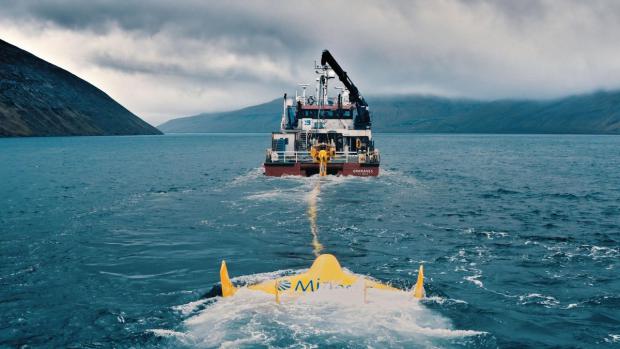
Breaking News
 The U.S. Government Is Not the Daddy of U.S. Oil Companies
The U.S. Government Is Not the Daddy of U.S. Oil Companies
 Aussie Leaders Crush Online Free Speech To Prop Up Failing Multiculturalism
Aussie Leaders Crush Online Free Speech To Prop Up Failing Multiculturalism
 Cocaine Dogs & 'Safe Space Ambassadors': Rand Paul Airs The Festivus (Budget) Grievances
Cocaine Dogs & 'Safe Space Ambassadors': Rand Paul Airs The Festivus (Budget) Grievances
 Are European Hawks Finally Sobering Up For Christmas?
Are European Hawks Finally Sobering Up For Christmas?
Top Tech News
 Travel gadget promises to dry and iron your clothes – totally hands-free
Travel gadget promises to dry and iron your clothes – totally hands-free
 Perfect Aircrete, Kitchen Ingredients.
Perfect Aircrete, Kitchen Ingredients.
 Futuristic pixel-raising display lets you feel what's onscreen
Futuristic pixel-raising display lets you feel what's onscreen
 Cutting-Edge Facility Generates Pure Water and Hydrogen Fuel from Seawater for Mere Pennies
Cutting-Edge Facility Generates Pure Water and Hydrogen Fuel from Seawater for Mere Pennies
 This tiny dev board is packed with features for ambitious makers
This tiny dev board is packed with features for ambitious makers
 Scientists Discover Gel to Regrow Tooth Enamel
Scientists Discover Gel to Regrow Tooth Enamel
 Vitamin C and Dandelion Root Killing Cancer Cells -- as Former CDC Director Calls for COVID-19...
Vitamin C and Dandelion Root Killing Cancer Cells -- as Former CDC Director Calls for COVID-19...
 Galactic Brain: US firm plans space-based data centers, power grid to challenge China
Galactic Brain: US firm plans space-based data centers, power grid to challenge China
 A microbial cleanup for glyphosate just earned a patent. Here's why that matters
A microbial cleanup for glyphosate just earned a patent. Here's why that matters
 Japan Breaks Internet Speed Record with 5 Million Times Faster Data Transfer
Japan Breaks Internet Speed Record with 5 Million Times Faster Data Transfer
28-ton, 1.2-megawatt tidal kite is now exporting power to the grid

Solar energy is the bedrock of most renewable energy grid plans – but lunar energy is even more predictable, and a number of different companies are working to commercialize energy generated from the regular inflows and outflows of the tides.
One we've completely missed is Minesto, which is taking a very different and remarkably dynamic approach compared to most. Where devices like Orbital's O2 tidal turbine more or less just sit there in the water harvesting energy from tidal currents, Minesto's Dragon series are anchored to the sea bed, and fly around like kites, treating the currents like wind.
Just as land-based wind energy kites fly in figure 8 patterns to accelerate themselves faster than the wind, so does the Dragon underwater. This, says Minesto, lets the Dragon pull more energy from a given tidal current than other designs – and it also changes the economic equations for relevant sites, making slower tidal flows worth exploiting.
These are by no means small kites – the Dragon 12 needs to be disassembled to fit in a shipping container. It rocks a monster 12-meter (39-ft) wingspan, and weighs no less than 28 tons. But compared to other offshore power options like wind turbines, it's an absolute minnow, and extremely easy to install using a single smallish boat and a sea bed tether.
As with any renewable energy project, the key figure here is LCoE (levelized cost of energy) – so what's it gonna cost? Well, back in 2017, Minesto projected about US$108/MWh once its first hundred megawatts of capacity are installed – with costs falling thereafter as low as $54/MWh.
For an unfair comparison, Orbital has claimed it's hoping for an LCoE less than $253/MWh for its very first O2 tidal turbine, a figure that'll drop with scale, and fixed-bottom offshore wind projects in 2022 had an estimated average LCoE around $89/MWh in 2022, according to the US DoE.



